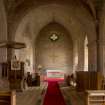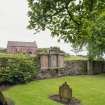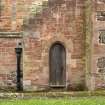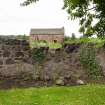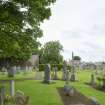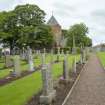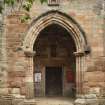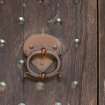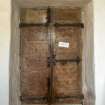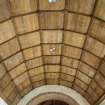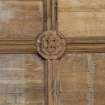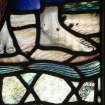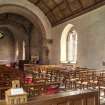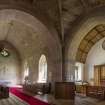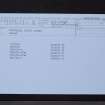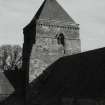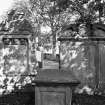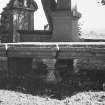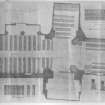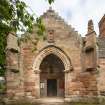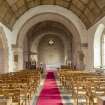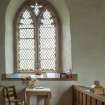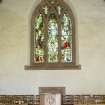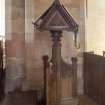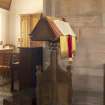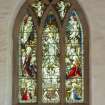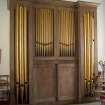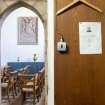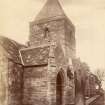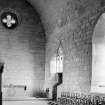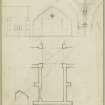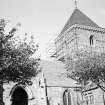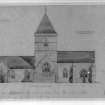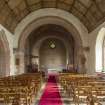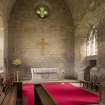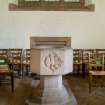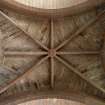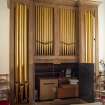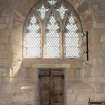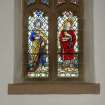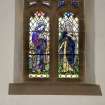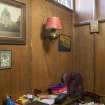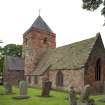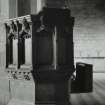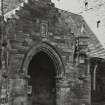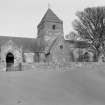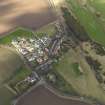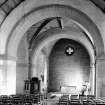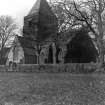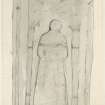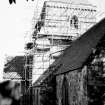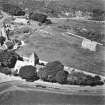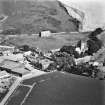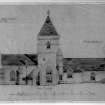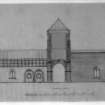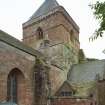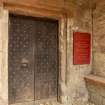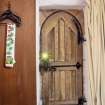Whitekirk, St Mary's Parish Church
Burial Ground (Medieval), Church (15th Century), War Memorial(S) (20th Century)
Site Name Whitekirk, St Mary's Parish Church
Classification Burial Ground (Medieval), Church (15th Century), War Memorial(S) (20th Century)
Alternative Name(s) Whitekirk, St Mary's Church And Burial-ground; Whitekirk Roll Of Honour; Maj W A Baird Memorial Plaque
Canmore ID 56675
Site Number NT58SE 11
NGR NT 59627 81524
Datum OSGB36 - NGR
Permalink http://canmore.org.uk/site/56675
First 100 images shown. See the Collections panel (below) for a link to all digital images.
- Council East Lothian
- Parish Whitekirk And Tyninghame
- Former Region Lothian
- Former District East Lothian
- Former County East Lothian
NT58SE 11 59627 81524
(NT 5962 8151) Whitekirk Parish Church: In the 12th century, Whitekirk was simply a parish church (dedicated to the Virgin Mary) belonging to Holyrood Abbey, but by about 1300 miracles of healing were being performed at a nearby well (NT58SE 30) and the church was placed under the protection of James I; it reverted to its position as a parish church in the 17th century and survived almost without alteration until 1914, when it was set on fire by suffragettes. The walls sustained little damage and a careful restoration was carried out by Robert Lorimer. It is cruciform on plan with a squat central tower and a two-bay choir with prominent buttresses. The only medieval tracery is in the S window. The E wall is blank except for a small oculus high up (renewed correctly after 1914) and a small armorial panel; the arms have been identified as those of Abbot Crawford of Holyrood (1460-83). This is not reconcilable in any obvious way with a record that Adam Hepburn of Hailes Castle built the choir in 1439. The N transept has no old features and the S transept is of 1830, much rebuilt by Lorimer.
Central tower with small two-light openings, a stair-turret at the NW corner and a low slated spire recessed behind a corbelled parapet. The N wall of the nave opens into a shallow rectangular projection added in 1832 and rewindowed by Lorimer. The S porch has a large, roughly detailed arch, a canopied niche over diagonal buttresses and, inside, a tunnel-vault with surface ribs. Plain pointed tunnel-vault over the choir. The crossing is entirely Lorimer's but reproduces the old design. Also by Lorimer the ceiled wagon roof over the nave and transepts.
C McWilliam 1978; RCAHMS 1924, visited 1913; D MacGibbon and Ross 1897; D C Bailey and M C Tindall 1963
Photographed by the RCAHMS in 1978.
(Undated) information in NMRS.
Whitekirk Parish Church: in use,
Visited by OS (WDJ), [no date cited].
The church of St Mary at Whitekirk was recorded on 13th July 2021 because of its potential closure as a place of worship. The opportunity was taken to record the building whilst still in use. The last service was held on 5th September 2021 and at present its future is uncertain.
The cruciform church dates from the 15th century and its Pre-Reformation history is described in the RCAHMS Inventory for East Lothian 1924 Item 200. This description will therefore deal with how the building has been altered and developed since the Reformation.
In the 17th century the nave and crossing were used as the place of worship and the chancel as a school. The doorway below the East window on the South wall of the chancel may well have been inserted at his time to provide external access to the school. In 1651 Oliver Cromwell used the church to shelter and billet his soldiers and probably his horses during his attack on Tantallon Castle.
On 3rd August 1761 the Parish of Tyninghame was united with that of Whitekirk and St Mary’s Parish Church became the place of worship. The Haddington gallery front was probably installed at Whitekirk soon afterwards since ‘after the union of the parish with that of Whitekirk in 1761 the (Tynninghame) church was in great part pulled down and destroyed’ RCAHMS Inventory 1924. The elaborate 17th century gallery front is illustrated in the Inventory article fig. 168.
The Baird of Newbyth Gallery an unusual free-standing timber gallery appears to have been of early 18th century date which stood against the East wall of the chancel. It is shown in a photograph DP377726 taken between 1891 and 1914 and recorded in a drawing by MacGibbon and Ross fig. 1193. It was described as looking like ‘a large Dutch Cabinet’. It was destroyed in the 1914 fire.
In 1832 a short South transept was added to the South of the crossing and around the same time the Seacliff Gallery was built in an outshot on the North side of the nave West of the North transept. Architecturally the form of the crossing suggests that there was a South transept at least proposed when the tower was built. On 8th October 1855 the Rev J Sime made a detailed record of the church included in his Memoabilia (see DP 027703) His view of the exterior shows the short south transept with a round arch arcaded traceried window. His sketch plan shows a double decker pulpit with font in the centre of south transept, the ‘Newbyth Seat’ at East end of chancel. The ‘Seacliff Seat’ is shown in its shallow projection to West of North transept. The Haddington Gallery which occupied the upper level of the North transept is not named but its stair is shown in an addition to east. Sime shows a movable long communion table and four box pews in the crossing. He also depicts a stove on the North wall of both the nave and the chancel.
A set of signed contract drawings by Wardrop, Anderson & Browne are dated October1884 detailing replacement of the nave ceiling and reordering including the installation of new pews. This shows all three galleries or family pews described above in situ. The pulpit is shown moved to Southwest corner of the chancel with small communion table in front under chancel arch. In February 1891 Wardrop & Anderson provided drawings for the demolition of the existing short South transept and its rebuilding as an organ chamber this involved extending the building southwards and a new traceried window. The extension was built in smooth ashlar. SC1316775 shows Anderson’s South Transept complete.
Interior illustrated in MacGibbon & Ross’s the Ecclesiastical Architecture of Scotland Vol III page 275 fig. 1193 published 1896-7 appears to show the arrangement after Wardrop, Anderson & Browne’s 1884 alterations but before the Wardrop & Anderson alterations of 1891. The double decker pulpit is shown remaining in the South transept. DP377726 shows the interior after 1891 with Anderson’s new pulpit replacing the earlier one shown in the MacGibbon and Ross drawing.
On 26th February 1914 a devastating fire broke out, allegedly started by suffragettes or ’incendiary women’ but there is only circumstantial evidence supporting this. The roofs of the nave, the North transept, the porch and the spire were lost. Although the roof of Anderson’s South transept appears to have survived it was later taken down. Internally all the stained glass and woodwork was lost including most notably the 17th century gallery front and the Baird of Newbyth gallery. The stone vaulted chancel survived largely unaffected and all the other stone walls survived including the tower and the stone vaults of the porch and the crossing.
In October 1914 Lorimer produced a set of plans reconstructing how the church was before the fire including SC1763832-34 and a set showing his proposed restoration including SC433353, SC 1763835-9. Both sets of drawings are held in the National Record of the Historic Environment.
The restoration of the church began in 1917. The external changes included the raising of the nave roof to match that of the chancel and following the pitch shown in raggles on the tower wall which is clearly visible in the MacGibbon and Ross drawing Fig. 1188. The remodeling of Wardrop and Anderson’s South transept including the removal of the South window, the insertion of windows in the East and West walls and a circular window in the newly crowstepped gable. To the rear he remodeled the Seacliff Gallery outshot removing the large window and inserting two pairs of smaller windows. In the North transept he replaced the ground and first floor windows with a single larger window.
Internally he did not reinstate any of the galleries and provided new paneled barrel vaulted timber ceilings for the nave and the transepts. He converted the Seacliff Gallery outshot into a small north aisle with a two-bay arcade with two pairs of windows. In the North Transept he inserted a larger traceried window and designed and installed a memorial to the 11th Earl of Haddington.
FURNISHINGS
Although Lorimer proposed pews the rush seated chairs were acquired instead. He designed the timber panelled kneelers, choir stalls, pulpit and lecturn. He also designed the sandstone communion table and font. The communion table in the south transept is a later addition and was not designed by Lorimer. The organ in the South transept was built in around 1950 by The John Compton Organ Company. A Miniatura model with 3 ranks of pipes in an oak case.
STAINED GLASS
The East quatrefoil widow has the inscription inscription ‘nomen super omne nomen’ (a name above all names) flanking a shield with Christ’s monogram JHS. This appears to be the only stained glass to have survived the fire it can be seen in the pre-1914 photograph DP377726. The South transept circular gable window is made up of three mouchettes with stained glass seraphim by Karl Parsons. The four windows in the North aisle of 1916 are by Karl Parsons depicting saints including St Andrew at left. The West window depicts The Resurrection with Saints and Angels and is by CE Kempe & Co Ltd. It was installed in memory of the Countess of Haddington who had died in 1889. The window was created after the fire of 1914. Photographs after the fire show the west window without glass and the tracery fragmentary. C E Kempe died in 1907 but the firm continued until 1938. All the other windows were leaded and fitted with opalescent art glass with occasional pieces of stained and textured glass see for example DP 377706.
NMRS REFERENCE
ARCHITECT: Sir Rowand Anderson, restoration, 1890's
Sir Robert Lorrimer, restoration, 1915-17
Dick Peddie & MacKay Edinburgh Details of Porch
Attic 2, Bin 6, Bag 1 J.S. Richardson, first year student, 1902
Field Visit (4 July 1913)
200. Whitekirk Parish Church.
Situated on rising ground about 3 ¾ miles north of East Linton, this building was complete and in use as the parish church until May 1914, when it was destroyed by incendiaries. An influential committee was formed for its restoration, and subscriptions from the heritors and the public were happily sufficient to enable the necessary work to be effected.
(For a full architectural description and historical note, see RCAHMS 1924, No. 200, pp. 125-128, figs. 166-8)
RCAHMS 1924, visited 4 July 1913.
Geophysical Survey (October 2014)
An area ground resistance survey totalling 4, 000 sq. m. was carried out in October 2014 in part of a field to the North of the churchyard of St Mary's Parish Church at Whitekirk, East Lothian in the parish of Whitekirk and Tyninghame. The survey, centred on NT 59602 81568 (NT58SE 12) was arranged by Connolly Heritage Consultancy. Ten 20x20 grids were surveyed over an area of 100x40 sq.m in a gently sloping pasture. The area was bounded by the wall of the churchyard to the S, by the garden fence of the tithe barn to the N and by field and garden walls to the East and West. Resistance variations recorded revealed that the site was generally of a low resistance with the exception of three areas of higher resistances at the SE, extending from the NE and at the extreme E of the survey area.
Edinburgh Archaeology Field Society




































![Photographic copy of plan for proposed restorations.
Insc: 'Whitekirk Parish Church, Proposed Restoration', 'Plan', 'Robt. Lorimer [A.R.S.A.], 17 Gt., Stuart [St., Edinr, Oct. 1914]'.](http://i.rcahms.gov.uk/canmore/l/SC01763838.jpg)






































































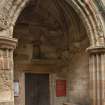
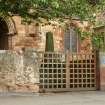
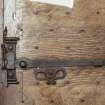
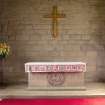
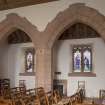
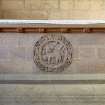
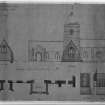

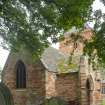
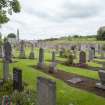
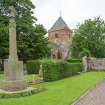
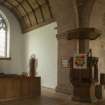

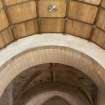
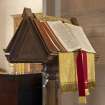
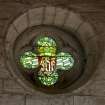
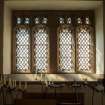
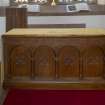
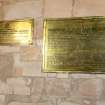
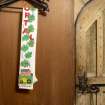
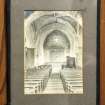
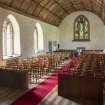
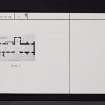
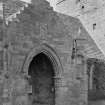
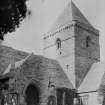

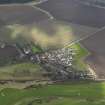
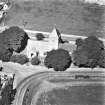
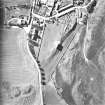
![Photographic copy of plan for proposed restorations.
Insc: 'Whitekirk Parish Church, Proposed Restoration', 'Plan', 'Robt. Lorimer [A.R.S.A.], 17 Gt., Stuart [St., Edinr, Oct. 1914]'.](http://i.rcahms.gov.uk/canmore/s/SC01763838.jpg)

